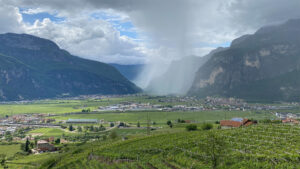Abstract/Description
Mountains are crucial for supporting life. More than half of humanity relies on the 60– 80% of the world’s freshwater that is accumulated, stored and distributed from mountains. The relationship between the physical environment, biodiversity and people who live on mountains and interact with these ecosystems can be summarized as mountain socio-ecological systems (MtSES). Exploring how East African MtSES have been shaped by interactions in the past, and how they might develop in the context of future climate change, is a highly complex and truly transdisciplinary venture made possible by a growing quantity and quality of information about the drivers of past change and response to this change. Paleoecological and archaeological data provide crucial information on ranges of variability, cycles, processes, responses and feedback that occur over timescales that are too long to be captured by observational studies and historical archives. The late-Holocene, particularly from around 3000 years BP, was a time of profound cultural transition; Settled agrarian societies emerged as part of the wider Bantu migration that originated from west Africa and quickly spread eastwards and southwards with new technologies, crops and land management practices. During this time a broad range of species were domesticated and their distribution dramatically altered, new technologies were developed and various complex societies emerged and collapsed. Forest degradation, due to agricultural expansion and rising temperatures, led to a reduction in montane forest, with globally important biodiversity hotspots such as the Eastern Arc Mountains of Tanzania losing some 90% of the forest extent Human activities such as deforestation, expansion of agriculture and pastoralism thus significantly transformed ecosystem composition and distribution. This long-term perspective is essential to assess the resilience of ecosystems and to maintain but also as having a key role in designing more sustainable futures that remain within planetary boundaries. By understanding “nature’s contributions to people”, at the most basic level, food, energy and water, we can understand the past, present and future of MtSES within new framings such as the Nature Futures Framework that characterizes how societies exploit, co-exist with or enhance nature through the past, at the present and how this could evolve in the future.


